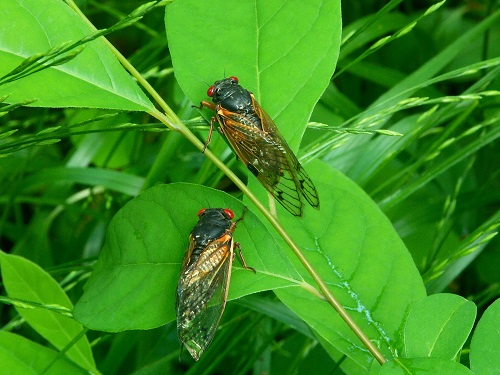

The family Cicadidae is subdivided into the subfamilies Cicadettinae, Cicadinae, Derotettiginae, Tibicininae (or Tettigadinae), and Tettigomyiinae they are found on all continents except Antarctica. The two extant species of the Tettigarctidae include one in southern Australia and the other in Tasmania. Cicadas are arranged into two families: the Tettigarctidae and Cicadidae. The superfamily Cicadoidea is a sister of the Cercopoidea (the froghoppers).

Taxonomy and diversity A 17-year cicada, Magicicada, Robert Evans Snodgrass, 1930 The name is directly from the onomatopoeic Latin cicada.
Cicada locust free#
Look up cicada in Wiktionary, the free dictionary. Cicadas are eaten by humans in various parts of the world, including China, Myanmar, Malaysia, central Africa, and Pakistani Balochistan. The cicada is also mentioned in Hesiod's Shield (ll.393–394), in which it is said to sing when millet first ripens. They have also been used in myth and folklore as symbols of carefree living and immortality. Ĭicadas have been featured in literature since the time of Homer's Iliad and as motifs in art from the Chinese Shang dynasty. Though these cicadas' life cycles can vary from 1 to 9 or more years as underground nymphs, their emergence above ground as adults is not synchronized, so some members of each species appear every year. The annual cicadas are species that emerge every year. The unusual duration and synchronization of their emergence may reduce the number of cicadas lost to predation, both by making them a less reliably available prey (so that any predator that evolved to depend on cicadas for sustenance might starve waiting for their emergence), and by emerging in such huge numbers that they will satiate any remaining predators before losing enough of their number to threaten their survival as a species. One exclusively North American genus, Magicicada (the periodical cicadas), which spend most of their lives as underground nymphs, emerge in predictable intervals of 13 or 17 years, depending on the species and the location. Only a rare few species are known to be nocturnal. The vast majority of species are active during the day as adults, with some calling at dawn or dusk. They typically live in trees, feeding on watery sap from xylem tissue, and laying their eggs in a slit in the bark. The earliest known fossil Cicadomorpha appeared in the Upper Permian period extant species occur all around the world in temperate to tropical climates. They have an exceptionally loud song, produced in most species by the rapid buckling and unbuckling of drum-like tymbals. The superfamily is divided into two families, the Tettigarctidae, with two species in Australia, and the Cicadidae, with more than 3,000 species described from around the world many species remain undescribed.Ĭicadas have prominent eyes set wide apart, short antennae, and membranous front wings. They are in the suborder Auchenorrhyncha, along with smaller jumping bugs such as leafhoppers and froghoppers. The cicadas ( / s ɪ ˈ k ɑː d ə z, - ˈ k eɪ-/) are a superfamily, the Cicadoidea, of insects in the order Hemiptera (true bugs).


 0 kommentar(er)
0 kommentar(er)
